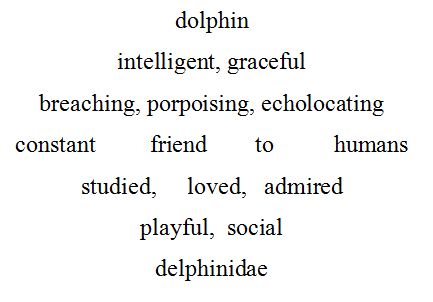

We got to our destination at 10:00a.m. I loved the special way we were treated. “Welcome to the Miami Seaquarium,” said Carlos, our host. “Please hop in. We’ll be taking this electric cart to get around.”
“Nice to meet you.” Ms. Costa introduced herself, then us.
“I’ll take you around the park to visit the sea turtles, seals, sea lions, walruses, manatees, killer whales, and of course, our dolphins. Please feel free to ask any questions.”
“Aren’t sea lions and seals the same thing?” I asked.
“No,” Carlos replied, “there are a number of differences between the two animals. Eared sea lions are sleek, social, and big-eyed. They are the ones that perform in shows, since they can walk easily on their flippers on land. Earless seals are chubby, quieter, solitary, belly crawlers on land but aquadynamic, faster swimmers.”
“Thanks, Carlos,” I said. “I never knew that.”
“I brought a scavenger hunt list for us to fill in as we go along. That’s usually a lot of fun,” said Carlos.
“What’s that?” asked Ms. Costa.
“We have grade-level lists of questions about the different sea creatures. As the visitors go around the park, they read the explanations at each exhibit and fill in the answers. I have a packet for you to take home. Your students can use their computers to look up the answers,” Carlos explained.
“Thank you, Carlos. Something like that makes learning a lot of fun,” Ms. Costa replied.
“One thing I’d like you to teach in your classes, Ms. Costa, is to be careful of throwing plastic trash away if it hasn’t been made safe. For example, the plastic rings that hold six or eight cans of soda together are potentially dangerous for baby sea mammals, as are other large plastic rings.
“When the trash is dumped into the deepest part of the ocean, these floating objects become toys for the young sea mammals. They’ll put their snouts through the rings and toss them or swim with them on the tips of their snouts. The problem is they don’t have arms to remove them, so this plastic stays with them forever.
“As they grow, the plastic becomes tighter and tighter until it cuts into their snouts or necks, often cutting off their breathing. Also, the creature can’t open its mouth to eat. It’s important to cut these plastic rings, before discarding, so they are no longer closed circles.”
“You have my word, Carlos. I will make my students aware of this danger and how to prevent it.”
“Maybe we can also do some kind of campaign to spread the news to the public.” Mom suggested. “I thought I knew about conservation and recycling, but I never heard about this. It makes complete sense that this problem would arise, but it never entered my mind. I’d be happy to design a poster or postcard.”
“Thanks. Our world needs all the help it can get,” said Carlos. “Let’s get back to the purpose of your visit. We have a lot planned for you. Before we see the dolphin show, I’m going to take you over to the dolphin swim area.”
“Each of you will be wearing a wet suit. You can go in the dolphin pool and hug, kiss, and feed the dolphins.”
“Is that for real?” I asked.
“It’s for real. You’ll also be able to give commands to the dolphins to do tricks. You’ll have a trainer next to you, guiding you through the steps,” Carlos added.
“But, wait. How deep is the water?” Jasmine wanted to know.
“It’s about waist deep,” Carlos responded. “When you’re in the pool, you can hang on to a dolphin’s dorsal fin and get a dolphin ride across the pool,” he added
“Cool! I never expected all of this!” I said.
“Can I wear a life vest?” Jasmine asked as she twisted her hair.
“I’m afraid not. It’s too bulky for you to hold onto the dolphin safely.
Everyone here’s a good swimmer. If you run into a problem, there’re a lot of people around to help.”
“This is going to be so much fun!” I said.
Jasmine didn’t say a word.
While we waited for the dolphin swim to begin, Jasmine and I answered some scavenger hunt questions. It was just like taking a test in school. Jasmine said, “You do the first five questions, and I’ll do the last five. Then we can trade answers.”
“OK. I like that idea.” I said.
1. Which other aquatic animals belong to the same group as dolphins?
2. How do dolphins communicate?
3. What is echolocation?
4. How do dolphins breathe?
5. Tell the purpose of the dolphin’s fins.
6. Describe the dolphin’s skin.
7. What is the melonhead on the dolphin?
8. What is the life expectancy of a dolphin?
9. Why are dolphins described as social?
10. What are the natural enemies of dolphins?
Ms. Costa checked our answers. 100% correct!
Why don’t you try now? You can check your answers on the next page. No peeking!